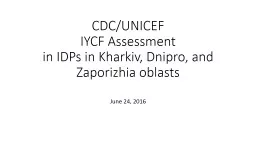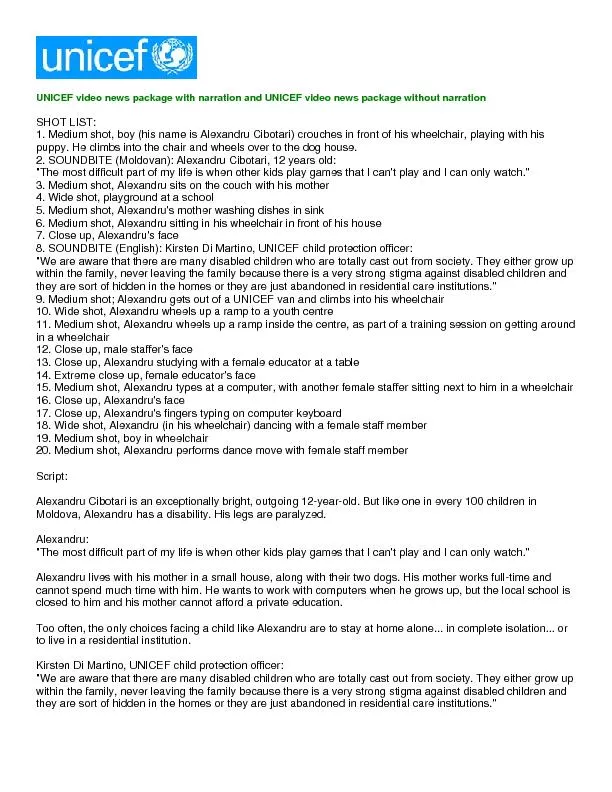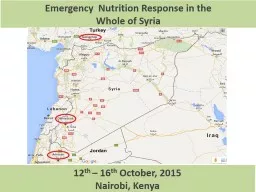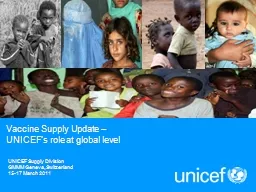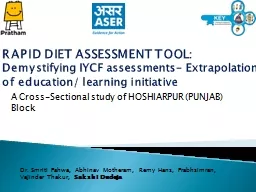PPT-CDC/UNICEF IYCF Assessment
Author : gristlydell | Published Date : 2020-06-23
in IDPs in Kharkiv Dnipropetrovsk and Zaporizhia oblasts July 10 2016 Introduction Focused on oblasts with highest numbers of IDPs outside of conflict Zone 169800
Presentation Embed Code
Download Presentation
Download Presentation The PPT/PDF document "CDC/UNICEF IYCF Assessment" is the property of its rightful owner. Permission is granted to download and print the materials on this website for personal, non-commercial use only, and to display it on your personal computer provided you do not modify the materials and that you retain all copyright notices contained in the materials. By downloading content from our website, you accept the terms of this agreement.
CDC/UNICEF IYCF Assessment: Transcript
Download Rules Of Document
"CDC/UNICEF IYCF Assessment"The content belongs to its owner. You may download and print it for personal use, without modification, and keep all copyright notices. By downloading, you agree to these terms.
Related Documents

